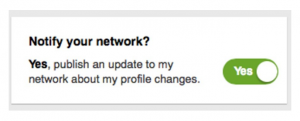8 Companies Who Employed Smart Thinking to Pivot During COVID-19
8 Companies Who Employed Smart Thinking to Pivot During COVID-19
Towards the start of the pandemic, we championed the stories of seven companies, from seven industries, who had made smart changes to their business models to thrive during COVID-19. From in-person baking classes moved online, to whole retail chains gone dark to support home deliveries and warehousing – if you missed the article, you can check it out here!
None of us could have imagined that the impact of the pandemic would be so far reaching or that its restrictions would have such longevity. In some places, life is slowly returning to normal. In others, normal still seems far off. It’s been some time, and we wanted to highlight 8 more companies who have made intelligent business changes to stay relevant and profitable when everything that they knew turned upside down.
Mattel Highlight Real Superheroes!

Toys have had an awesome year, with so many families needing some new supplies to keep kids busy while school closed its doors. But the competition is huge! We love how Mattel found a way to rise to the top of the pack by creating a brand-new product that no-one else would be selling. They launched a line of Key Worker themed action figures. The “Thank you heroes” collection includes nurses, doctors, delivery drivers and EMTs. Mattel saw its sales soar 47% in Q1 2021, exceeding all expectations from Wall Street.

Studio 539 Mixes Up the Supply Chain
Large scale events like weddings seemed to be a failsafe business, after all – there will always be couples looking to get married, right? Turns out, we were wrong, and this florist, @studio539flowers, was really struggling as an increasing number of events were being put on hold. On top of that, COVID-19 meant supply chain issues. The company quickly made two intelligent changes. First, they beat supply chain issues by exploring local farms and even growing their own flowers and foliage where necessary, becoming their own supplier. Secondly, they pivoted their business from huge events, and started specializing in smaller, intimate gatherings instead. And business is blooming!

Escapology Moves Online
Escape rooms were the up and coming leisure King of entertainment, whether it was for a night out, a bachelor/bachelorette party, corporate team building or more. But COVID-19 closed doors for many escape room companies, and Escapology Columbia saw business drop 82% in a single week. With a bit of ingenuity and tech know-how, Escapology launched Escapology @Home, and in 2020 saw half of its revenue come from the web application. In fact, after transforming their business through this pivot, they expect 2021 to be their most lucrative year yet.

Innovative Fitness Spots an Opportunity
Personal trainers are a tough sell when gymnasiums are closed, and Innovative Fitness quickly closed all 12 of its branches when the pandemic hit. However, they never thought of closing their doors entirely. “We were able to essentially reinvent our business in five days,” CEO Christopherson said. “We flipped our training services that were brick-and-mortar, in-person, to online.” 95% of its trainers stuck by the company’s side, as they moved to a 30-day online fitness plan, with at-home workouts, tips and tricks from a growing community. In fact, within 48 hours, the online community attracted 1,500 members, and it now has more than 2,200 and growing.

Milwaukee Food and City Tours Gets Innovative
We love the way that this Winsconsin-based tour company thought outside the box to stay profitable during the pandemic. Forced to decrease the number of physical tours they offered, and with fewer patrons on the street and signing up for tours due to face coverings and social distancing, they adapted their offering to include gift boxes, known as “Shelter in Style” kits. These included all the tastes and experiences of Milwaukee, including baked goods, interactive stories, trivia and more. An experience in a box – awesome!

ChargedUp Step up!
You might recognize ChargeUp’s power on-demand charging stations, as the largest supplier of device charging equipment in Europe. Use your phone to scan a ChargeUp station, and release a power bank. That’s it! However, this year, ChargeUp stations have stayed profitable by becoming CleanUp stations, offering hand sanitizer to stop the spread of COVID-19. “With the majority of our usual network of pubs, clubs, cafes, and shopping centers closing down due to the COVID-19 crisis, we wanted to find a way to use our skills, our resources, and our network to help during what is a tough period for everyone. We have a strong creative team, so we put our heads together – virtually, not physically! – and CleanedUp was born.”

Subway Moves to Fresh Groceries
Restaurants have been one of the industries that have suffered most from the pandemic, especially as a result of the waves of opening doors and closing them again, making it difficult for many companies in the Food and Hospitality business to plan ahead in terms of stock and staffing. Many restaurants have made intelligent changes that will offer them more sustainable revenue. Subway Grocery allowed Subway to move into selling staples such as bread, meat, eggs, cheese and more, selling these at 250 of their stores, with online orders and curbside pickups.

Club Vino – Experiences Moved Virtual
Wine tasting is one of those experiences that is just not pandemic-friendly, from the restrictions on traveling, to the nature of sharing bottles and nibbles, all very un-mask friendly! Marco Castelanelli didn’t want to wait around for the new normal, so Club Vino went online, including a home-tasting package that includes your themed wine, printable tasting notes, and a video that guides the customers through the process. With vouchers available on the website, this business pivot is not just a great alternative for consumers, it’s also a lot more scalable for Castalanelli.
Want to Follow These Companies’ Agile Examples?
If you’re still looking for ways to address the new normal, according to the Harvard Business Review, your pivot needs to follow three steps.
- Align with one trend caused by the pandemic, such as remote work or social distancing.
- Extend your existing capabilities alongside your original intent for value.
- Offer a sustainable path to profitability, enhancing your brand value for consumers.
Have any other examples of awesome pivots from this year? Share them in the comments!

 Certified ScrumMasters earn more on average than their non-certified peers.
Certified ScrumMasters earn more on average than their non-certified peers. Expand your career options and get your foot in the door with more interview opportunities.
Expand your career options and get your foot in the door with more interview opportunities. Get the job you’ve been dreaming about.
Get the job you’ve been dreaming about. Significantly expand your professional network by becoming a part of the Scrum community.
Significantly expand your professional network by becoming a part of the Scrum community.
 Improve collaboration within your team.
Improve collaboration within your team. Enhance your efficiency and improve project delivery times.
Enhance your efficiency and improve project delivery times. Get more projects within your organization.
Get more projects within your organization. Get the skills you need to contribute to and drive organization change.
Get the skills you need to contribute to and drive organization change.
 As a CSM, you will learn to be a good team player by listening to your teammates, accepting their suggestions, addressing challenges they may face, and helping them collaborate to solve these challenges.
As a CSM, you will learn to be a good team player by listening to your teammates, accepting their suggestions, addressing challenges they may face, and helping them collaborate to solve these challenges. Learn to keep the channels of communication and collaboration open to ensure that your team works together towards the success of each project.
Learn to keep the channels of communication and collaboration open to ensure that your team works together towards the success of each project.  Adopt an Agile mindset and help your team members do the same. This will lead to fewer disagreements, better collaboration and more successful projects.
Adopt an Agile mindset and help your team members do the same. This will lead to fewer disagreements, better collaboration and more successful projects. Everyone on LinkedIn gets the same opportunity to stand out to the crowd, using their headline and summary on their profile. This is the first thing that recruiters and executives will see when they click on your profile – so make it count! You have 120 characters to play with in your headline, and there are no rules. That means you don’t need to use your actual current job title if you feel that something else is more important. Feel free to add adjectives or certifications if that will support your description.
Everyone on LinkedIn gets the same opportunity to stand out to the crowd, using their headline and summary on their profile. This is the first thing that recruiters and executives will see when they click on your profile – so make it count! You have 120 characters to play with in your headline, and there are no rules. That means you don’t need to use your actual current job title if you feel that something else is more important. Feel free to add adjectives or certifications if that will support your description. Look for the ‘notify my network’ button on your profile page, and keep it firmly toggled off until you’re done editing your information. Otherwise your contacts will get told about every capital letter you tweak while you’re making your profile shine. Don’t forget to switch it back on when you’re ready to share!
Look for the ‘notify my network’ button on your profile page, and keep it firmly toggled off until you’re done editing your information. Otherwise your contacts will get told about every capital letter you tweak while you’re making your profile shine. Don’t forget to switch it back on when you’re ready to share! LinkedIn have recently rolled out a new feature that allows you to show recruiters that you’re ready for a new challenge. Simply head to your profile and under your picture you’ll see an option to
LinkedIn have recently rolled out a new feature that allows you to show recruiters that you’re ready for a new challenge. Simply head to your profile and under your picture you’ll see an option to If you
If you  Bottom line is that LinkedIn is a social network. That means that you’ve got to be social to make things happen! Show your personality through the content that you share and post, and utilize the messenger app to reach out to connections without the copy and paste tool. Another important element of LinkedIn that can display that you’re a team player is
Bottom line is that LinkedIn is a social network. That means that you’ve got to be social to make things happen! Show your personality through the content that you share and post, and utilize the messenger app to reach out to connections without the copy and paste tool. Another important element of LinkedIn that can display that you’re a team player is 
 Most interviews at the moment are taking place remotely, but video-conferencing software can put a lot of us on edge. Remember, we’re all in the same boat, and the interviewer also would probably feel more comfortable across the table from you rather than making themselves clear on-screen. At the end of the day, they are looking for the same things as your in-person interviewer would, that human connection and a better understanding of who you are.
Most interviews at the moment are taking place remotely, but video-conferencing software can put a lot of us on edge. Remember, we’re all in the same boat, and the interviewer also would probably feel more comfortable across the table from you rather than making themselves clear on-screen. At the end of the day, they are looking for the same things as your in-person interviewer would, that human connection and a better understanding of who you are.  As soon as your virtual interview has been scheduled, it’s time to check that tech. First, look to see which software HR has invited you to meet with. If you already have this application and feel confident with it, great. If it’s a new system, check if you need to download any new software, or create an account. Ask a friend to run a test run with you so that you can learn features such as sharing your screen, turning yourself on mute, or utilizing the chat window.
As soon as your virtual interview has been scheduled, it’s time to check that tech. First, look to see which software HR has invited you to meet with. If you already have this application and feel confident with it, great. If it’s a new system, check if you need to download any new software, or create an account. Ask a friend to run a test run with you so that you can learn features such as sharing your screen, turning yourself on mute, or utilizing the chat window. This is one of the ways that you can play virtual interviews to your own advantage. Choose a spot that makes you feel comfortable, with a background that feels professional, and in a quiet place where you know that you won’t be disturbed. If you feel that a drink of water would help with any nerves, you can make sure you have one ready. With no surprises, you can run through potential interview questions knowing exactly what the environment will be like, ahead of time.
This is one of the ways that you can play virtual interviews to your own advantage. Choose a spot that makes you feel comfortable, with a background that feels professional, and in a quiet place where you know that you won’t be disturbed. If you feel that a drink of water would help with any nerves, you can make sure you have one ready. With no surprises, you can run through potential interview questions knowing exactly what the environment will be like, ahead of time.
 You also might want to be more vocal about your personality and skills, seeing as a lot of extras such as body language will be missed when you’re speaking online. Explain why you’re enthusiastic about the role and the company, why you think you’re a great fit for the job, and how you see yourself fitting in well with the existing culture and staff. Just like with an in-person interview, don’t forget to follow up via email within a couple of days, and invite the company to reach out with any clarifications or additional info.
You also might want to be more vocal about your personality and skills, seeing as a lot of extras such as body language will be missed when you’re speaking online. Explain why you’re enthusiastic about the role and the company, why you think you’re a great fit for the job, and how you see yourself fitting in well with the existing culture and staff. Just like with an in-person interview, don’t forget to follow up via email within a couple of days, and invite the company to reach out with any clarifications or additional info. So, make it easy for them! Turn up ready and prepared for your virtual interview, in a professional setting, with all your technology set up to go without a hitch. Then, present your skills and personality front and center, and let the interviewer see the value you’re ready to add to their organization.
So, make it easy for them! Turn up ready and prepared for your virtual interview, in a professional setting, with all your technology set up to go without a hitch. Then, present your skills and personality front and center, and let the interviewer see the value you’re ready to add to their organization.
 Getting your team involved in orchestrating the Scrum makes it easier to get the entire team participating. Often, you’ll find it’s only the facilitator, the Scrum Master who is speaking throughout the meetings, and you’re not even sure if the rest of the team are paying full attention. I love the idea of
Getting your team involved in orchestrating the Scrum makes it easier to get the entire team participating. Often, you’ll find it’s only the facilitator, the Scrum Master who is speaking throughout the meetings, and you’re not even sure if the rest of the team are paying full attention. I love the idea of

 One of the best things about the Daily Scrum is that it can go anywhere. And yet, oftentimes Scrum teams meet in the same place, even sitting around the same meeting table. Take advantage of how portable this meeting can be, there’s a reason it’s called the Daily Stand-up after all! Get your team members engaged and interested by
One of the best things about the Daily Scrum is that it can go anywhere. And yet, oftentimes Scrum teams meet in the same place, even sitting around the same meeting table. Take advantage of how portable this meeting can be, there’s a reason it’s called the Daily Stand-up after all! Get your team members engaged and interested by This US-based plastics company found a way to keep their 50 employees working throughout the coronavirus lockdown, at the same time as giving back to the general public.
This US-based plastics company found a way to keep their 50 employees working throughout the coronavirus lockdown, at the same time as giving back to the general public.  Square restaurant, by offering
Square restaurant, by offering
 You would be hard pressed to find an industry that’s been as heavily impacted by the Coronavirus as the travel industry. Airlines in particular are taking a huge hit, with as many as 95% of global flights grounded at one point during the last few months. Many airlines are changing the way they do business. Traditionally,
You would be hard pressed to find an industry that’s been as heavily impacted by the Coronavirus as the travel industry. Airlines in particular are taking a huge hit, with as many as 95% of global flights grounded at one point during the last few months. Many airlines are changing the way they do business. Traditionally, If you’ve been the victim of a lockdown birthday celebration, a postponed wedding or a lacklustre celebration during the past few months, you know that the events industry has struggled to adapt to the new reality. However, this UK-based events company, specializing in connecting groups with popular reality TV baking show stars has risen to the challenge (no pun intended). The company has moved its in-person classes online, and launched virtual classes where participants can
If you’ve been the victim of a lockdown birthday celebration, a postponed wedding or a lacklustre celebration during the past few months, you know that the events industry has struggled to adapt to the new reality. However, this UK-based events company, specializing in connecting groups with popular reality TV baking show stars has risen to the challenge (no pun intended). The company has moved its in-person classes online, and launched virtual classes where participants can
 Hotels are another industry that’s taken a real hit, so it’s exciting to see innovative hoteliers looking to pivot to stay relevant. Red Roof has launched its
Hotels are another industry that’s taken a real hit, so it’s exciting to see innovative hoteliers looking to pivot to stay relevant. Red Roof has launched its